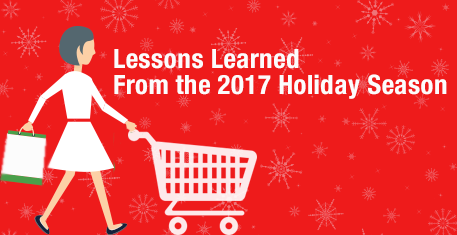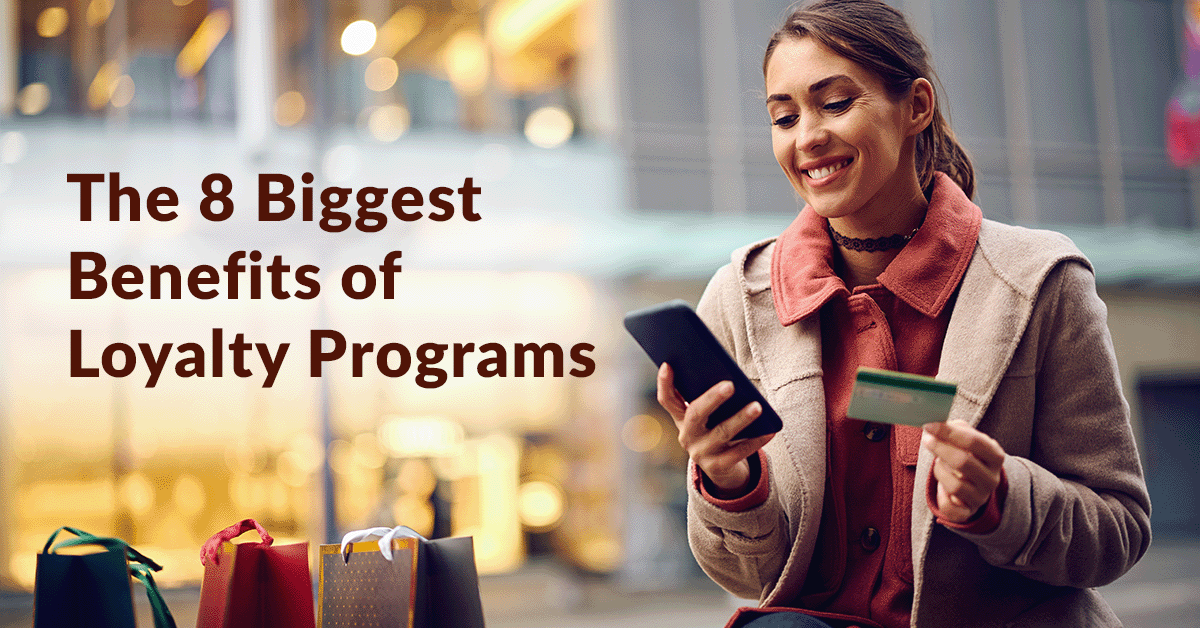Lessons Learned from the 2017 Holiday Season
Before the title of this piece sends you into a spiral of January 2 anxiety, fear not; the holidays are not over yet. There’s still plenty of time to gulp down those last dregs of eggnog and stroll the mall aisles for that perfect present. However, the trends have been set and the jury is in: this year’s season, from a marketing perspective, has revealed some interesting learnings that you need to know about.
Here are some high level facts that paint a picture of this holiday season worthy to be hung over any toasty fireplace:
- Cyber Monday (online sales that happen the 1st Monday after Thanksgiving) and Green Monday (usually the 2nd Monday in December) offer up additional marketing opportunities for national and local stores as the informal holiday continues to rise in popularity.
- Online and mobile sales carried the way even on traditional shopping days: Black Friday shoppers spent over $5 billion online, with $2 billion on mobile alone.
- Christmas shopping is still crucial: 21% of consumers want to gain loyalty points or rewards through their Christmas shopping.
- Marketers who will win will have learned how to maximize loyalty programs for shoppers. eMarketer analysis also found that 55% of shoppers will be influenced on where to shop based on whether a store has a loyalty program or not.
Clearly, the rise of mobile and the emphasis on sound loyalty strategies were huge factors in how shoppers conducted their spending. Let’s examine some of the deeper learnings associated with these general influences:
Rewards are a new currency
Shoppers are really serious about their rewards – in fact, they’re so enthusiastic about them that they can almost be seen as a currency on their own. A recent research study from Citi retail services found that 26% would use rewards to buy gifts for someone they wouldn’t otherwise.
But some shoppers are saving those rewards for themselves: 50% of shoppers use rewards to buy more gifts than they would otherwise. 59% of shoppers will be using loyalty program rewards for their Christmas purchases. The average shopper participates in four rewards programs and nearly 90% of shoppers plan to utilize those programs during the holidays to either accumulate points or redeem existing ones.
Further, rewards generally appeal to all prospective buyer groups. They are hugely popular with Millennials, as they are the most avid reward seekers (83%). Generation X closely follows (73%), with approximately one in two Boomers (54%) participating in rewards programs.
Offer “Value-Add” Rewards That Incentivize Loyalty
Most of the holiday season falls in November and December, and there is a lot of competition. In a landscape as hot as the weather is cold, it’s mission critical that brands elevate their offers to stand out from the crowd.
One great way to accomplish just this: value-added rewards can be used to incentivize shoppers to take the first steps towards registering in a loyalty program or participating in a promotion. Value-add rewards stand to better connect with consumers’ inherent wants and needs when compared to traditional discounts.
According to Forrester, more than 80% of consumers are attracted to deals like coupons and discounts offered by brands they’ve purchased before[1]. When combined with in-store or in-app incentives, marketers can create brand loyalty that lasts well beyond the holiday season.
By using rewards to encourage new consumers to register accounts you encourage them to make another purchase sooner rather than later. Today, by leveraging availing technology such as receipt processing, brands can look to bypass retailers and still get holistic views of their customers, including making key decisions on how to engage them. You also associate the reward with the brand, which builds equity in the consumer’s mind.
Offer More Exclusivity to Your Existing Loyalty Members!
Everyone wants to feel special around the holidays. You can take this narrative and use it to your advantage when strategically encouraging loyalty by offering your highest participating members a little something extra. One great example is by offering bonus points for referrals. Way before the holidays even begin, and during the cusp of the shopping frenzy, referrals can act as magic charm for new customer’s growth rate. This might not just increase your customer base, but referrals usually increase the chances of purchase as well, because peer reviews are so widely welcomed by their very nature. In fact, referred customers drive 2 times more sales than ads.
Another option is to offer more exclusivity for the existing program members. For example, for limited period of time or during holiday season, existing loyal members can earn 2 times more points compared to the usual rate. This tactic tends to be really helpful to encourage shoppers to spend more throughout holiday season. A key thing to note regarding this strategy: be sure you’re only favoring loyal members – those that actually engage with the program. It’s not worthwhile expending energy and rewards on members whose profiles have been sitting empty since their conception.
The holidays are a time when brands give back to their most loyal customers through special deals and incentives. Loyalty program members can look forward to added value when they redeem or earn new rewards from brands that are committed to strengthening ties with their most dedicated shoppers. Snipp works closely with brand partners to create a robust loyalty programs to woo target audiences and convert them into a life-long customers.





